Introduction To Ants And Their Classification
Welcome to the world of ants! These tiny creatures have intrigued scientists and nature enthusiasts alike for centuries. Ants belong to the family Formicidae and are classified as insects. Like all insects, ants have a hard external skeleton, six legs, and a segmented body. However, ants are unique in terms of their social behavior and organization.
Ants are further classified into different subfamilies based on their physical characteristics and behavior. One of the most recognizable subfamilies is the Myrmicinae, which includes the commonly seen pavement ant and fire ant. Another notable subfamily is the Dolichoderinae, which includes the Australian meat ant and the Argentine ant. Each subfamily has its own distinct features, such as body shape, nest-building behavior, and food preferences.
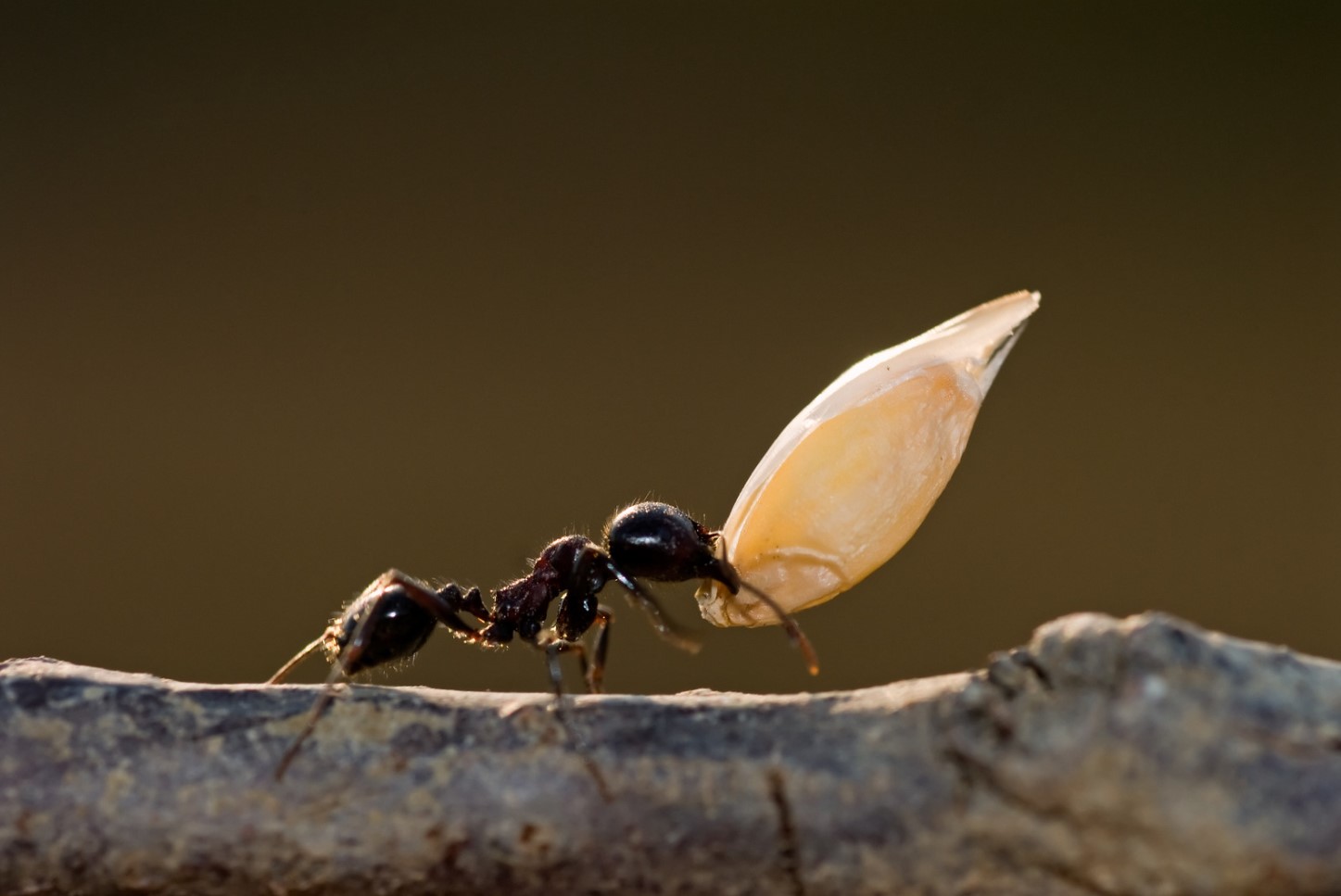
- Myrmicinae – pavement ant, fire ant
- Dolichoderinae – Australian meat ant, Argentine ant
Ants can also be classified based on their geographical location. For example, some species are found only in certain parts of the world, such as the leafcutter ants in South America. Other species, such as the carpenter ant, can be found in many different regions.
| Subfamily | Characteristics |
|---|---|
| Myrmicinae | Pavement ant, fire ant |
| Dolichoderinae | Australian meat ant, Argentine ant |
Learning about the different classifications and characteristics of ants can help us better understand these fascinating creatures. From their social organization to their habitat preferences, ants are truly remarkable. Stay tuned for more in-depth articles on each of these topics!
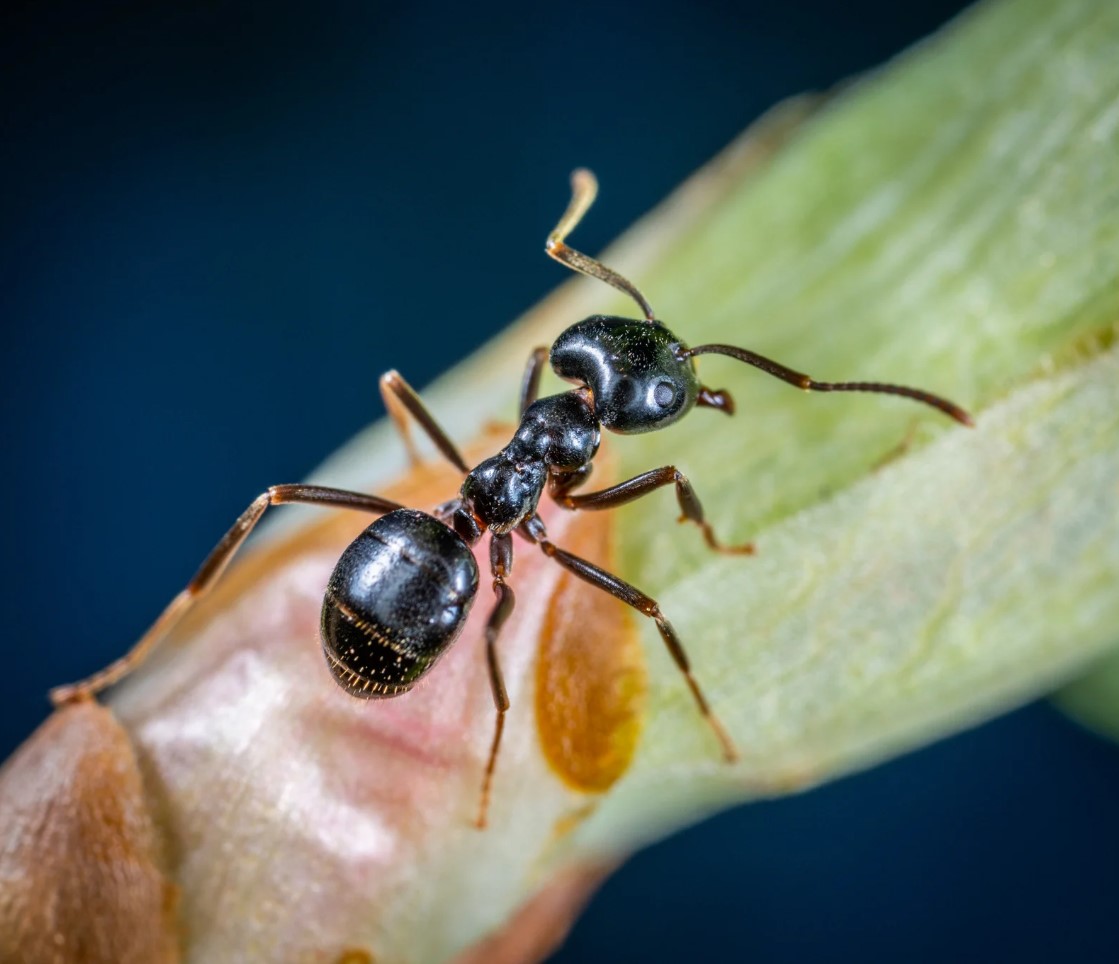
Types Of Ants And Their Characteristics
Ants are small, social insects that can be found almost all over the world. There are more than 12,000 known species of ants, and each one has unique characteristics that make it different from the others. In this blog post, we will explore the types of ants that exist and discuss their physical and behavioral characteristics.
Queen Ants: These ants are the largest in the colony and are responsible for laying eggs. They have wings and can fly to a new location to start a new colony. Once the colony has been established, the queen will no longer fly and will produce millions of eggs throughout her lifetime. Queen ants can live for several years.
Worker Ants: These ants are the smallest in the colony and make up the majority of the ant population. They are responsible for maintaining the nest, finding food, and taking care of the young. Worker ants are sterile females and do not lay eggs. They have strong mandibles and are capable of carrying objects that are many times their own weight.
- Soldier Ants: These ants are responsible for defending the colony. They have strong jaws and are capable of delivering painful bites to predators.
- Male Ants: These ants have wings and are responsible for mating with the queen. Once they have mated, they will die shortly after.
Carpenter Ants: These ants are known for their ability to burrow through wood. They do not eat the wood, but rather use it to create tunnels and nests. Carpenter ants can be a pest to humans if they infest buildings and cause structural damage.
- Fire Ants: These ants are known for their painful stings and aggressive behavior. They build large mounds and will attack anything that disturbs their nest.
- Harvester Ants: These ants are named for their habit of collecting seeds. They are found in dry climates and have a unique behavior of spreading seeds in a circular pattern around their nest.
In conclusion, ants are fascinating creatures that exhibit a wide range of characteristics and behaviors. It is important to understand the types of ants that exist in order to better appreciate the diversity of the natural world.
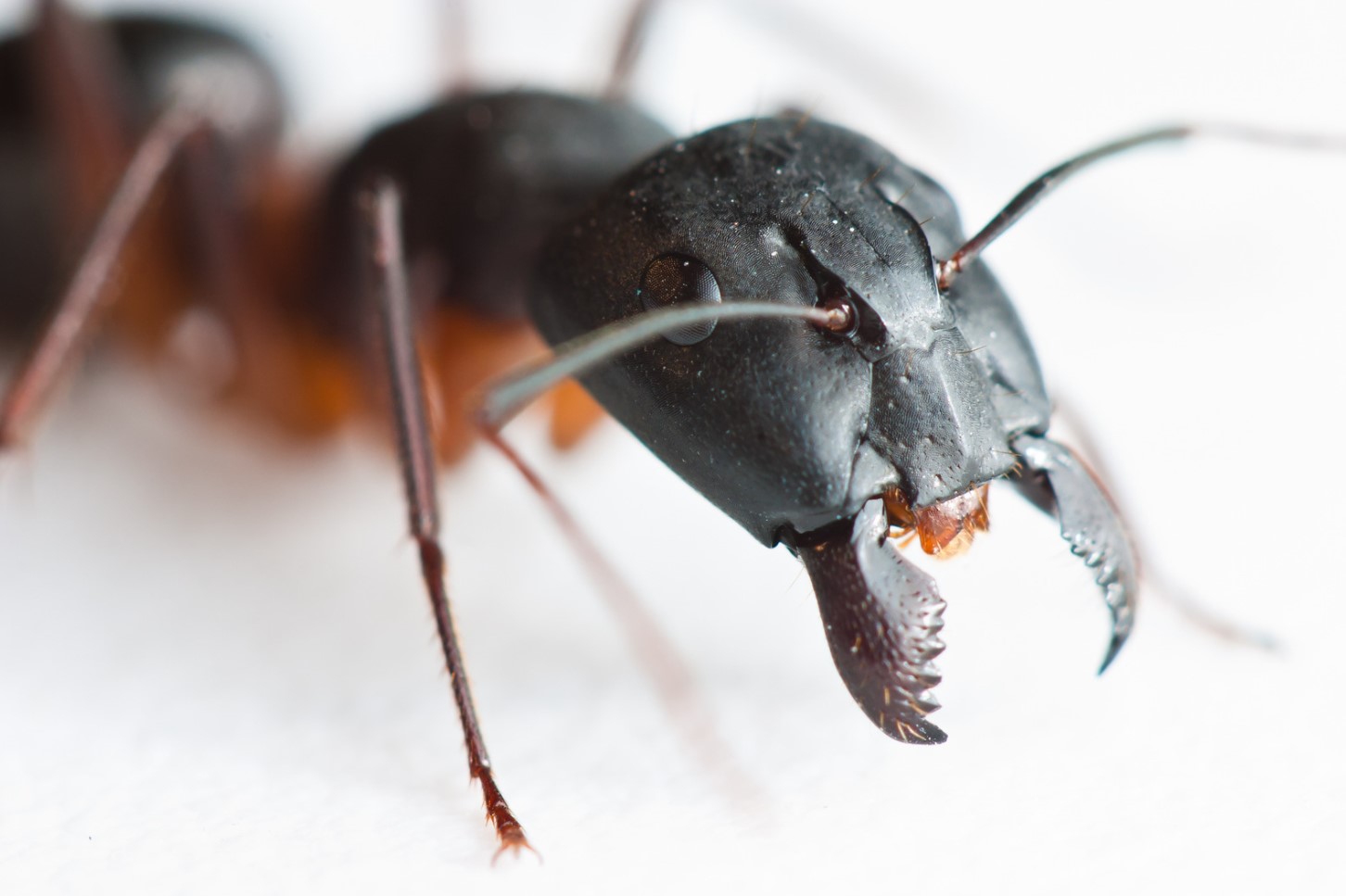
Evolution And History Of Ants
Ants are fascinating creatures that have existed for millions of years. They belong to the family Formicidae, which has over 12,000 known species. The earliest known ant fossils date back to the mid-Cretaceous period, about 110 to 130 million years ago. These early ants were nothing like the ants we know today. They were wingless and had a more primitive anatomy compared to modern ants.
Over time, ants evolved and diversified into many different forms. Some became winged and developed the ability to fly, while others lost their wings and became ground-dwelling species. Ants became highly specialized and developed complex behaviors and social structures, which allowed them to thrive in different environments around the world. Today, ants are found in almost every terrestrial habitat and play a vital role in many ecosystems.
- Some notable evolutionary milestones in the history of ants include:
- The development of complex communication systems using chemicals and body language
- The evolution of specialized castes with different roles in the ant colony
- The development of mutualistic relationships with other organisms, such as aphids and fungi
- The evolution of aggressive behavior and defensive mechanisms, including venom and sharp mandibles
Despite their small size, ants have left a major mark on the history of life on Earth. They have influenced the evolution of many other organisms, such as plants that have developed structures to attract ants for pollination and protection. Ants have also been important in human culture and folklore, appearing in stories and myths from all around the world.
| Genus | Description |
|---|---|
| Atta | Known as leafcutter ants, these large ants are capable of carrying leaves many times their body weight to their underground nests. |
| Camponotus | These ants are known for their large size and powerful mandibles. Some species are carpenter ants that can damage wooden structures. |
| Formica | A common genus of ants that can be found in many parts of the world. Many species are aggressive and have a painful sting. |
Overall, the evolution and history of ants is a fascinating topic that provides insights into the diversity of life on Earth. By studying ants, we can learn about the complex relationships between different organisms and the ways in which they have adapted to different environments over time.
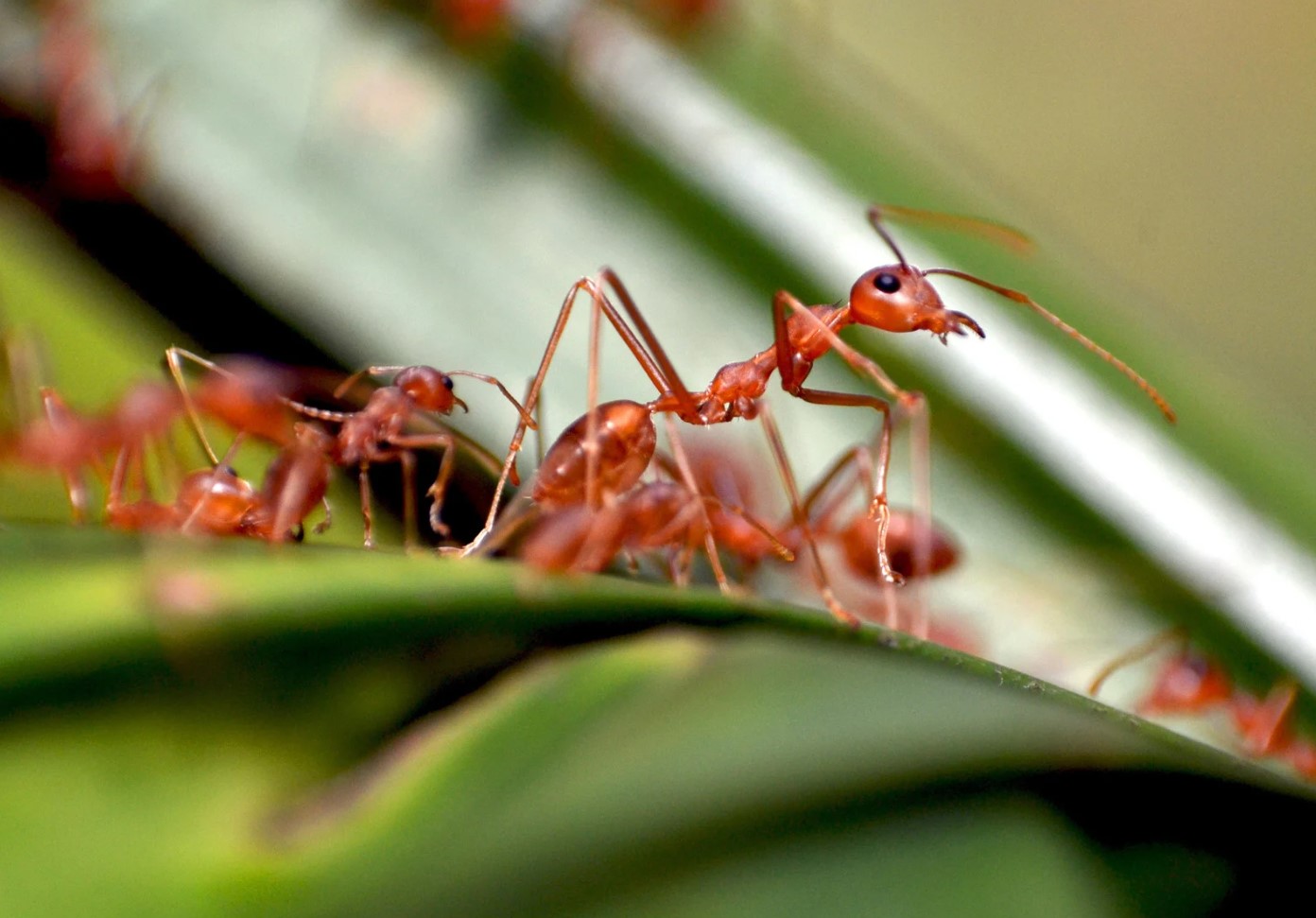
Ant Anatomy And Physiology
Ants are fascinating creatures that belong to the insect family Formicidae, and are known for their incredible strength and complex social structures. To fully understand ants, it is important to examine their anatomy and physiology.
One of the defining features of ants is their exoskeleton, which gives them their hard, armored appearance. This exoskeleton is made up of chitin, a tough, fibrous material that protects them from predators and the environment. Ants also have six legs, which are attached to their thorax, and can move incredibly quickly, allowing them to easily navigate their environment.
As with all insects, ants have a central nervous system, which allows them to sense and respond to their surroundings. They have two large compound eyes, which are made up of hundreds of individual lenses, and allow them to see movement, light, and color. Ants also have two antennae, which are used to detect chemicals, food sources, and other ants. They use a complex chemical communication system to interact with each other, leaving pheromone trails that other ants can follow to food or to a new nesting site.
- Chitin is an essential component of ant exoskeletons.
- Ants have six legs, which allow them to move quickly and efficiently.
- Their compound eyes and antennae are critical for their survival and communication with other ants.
In addition to their physical characteristics, ants have a number of internal organs that allow them to survive and reproduce. Like all insects, ants have a segmented body, with a head, thorax, and abdomen. Their digestive system includes a mouth, esophagus, stomach, and intestines. They also have a heart and a circulatory system that transports nutrients and oxygen throughout their bodies. Finally, ants have reproductive organs that allow them to mate and lay eggs, ensuring the survival of their colonies.
| Organ | Function |
|---|---|
| Antennae | Chemical detection and communication |
| Exoskeleton | Provides protection and support |
| Heart | Pumps blood and distributes oxygen and nutrients |
| Digestive system | Breaks down and absorbs food |
| Reproductive organs | Allows for mating and egg-laying |
Overall, the anatomy and physiology of ants are critical to their survival and success as a species. By understanding the unique characteristics of ants, we can gain a greater appreciation for these fascinating insects and the important role they play in our ecosystem.
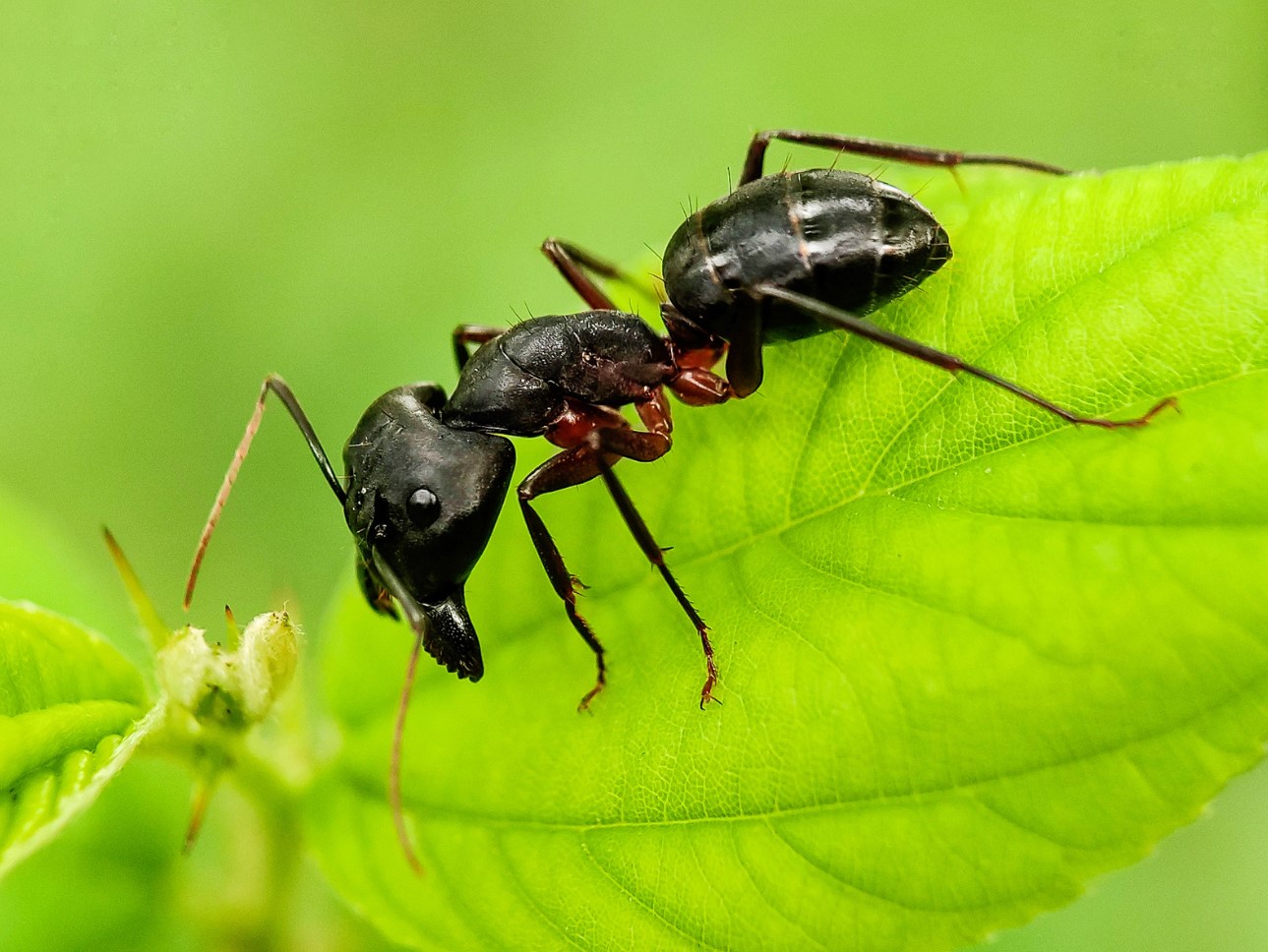
Ant Behavior And Social Structure
Ants are fascinating creatures that are renowned for their complex behaviors and social structure. These insects belong to the family Formicidae and are found all around the world, making up roughly 20% of the Earth’s terrestrial animal biomass. Ants have been around for millions of years, evolving and adapting to various environments, and have become a significant part of many ecosystems.
One of the key reasons for ants’ success is the way in which they interact and cooperate within their colonies. Ants live in highly organized societies, where each individual has a specific role to play. This social structure is divided into several castes, including the queen, workers, and soldiers. The queen is responsible for reproduction and can lay thousands of eggs in her lifetime. The workers, on the other hand, carry out all the day-to-day activities of the colony, such as foraging for food and caring for the young.
The social interactions within the colony are facilitated by a range of communication mechanisms that ants use to convey information to one another. Chemical signaling plays a crucial role in this, as ants release pheromones that inform other members of the colony about various things, such as the location of food or the presence of an enemy. In addition to chemical communication, ants also use tactile and auditory signals to communicate with one another.
- Ants also exhibit a wide range of complex behaviors, such as farming, hunting, and construction. Some species, for example, will farm fungus, which they use as a food source. Others will hunt and subdue prey, working together to bring down larger animals. Ants are also renowned for their ability to construct complex nests, which can have multiple chambers and tunnels.
Overall, the behavior and social structure of ants are incredibly complex and sophisticated, making them one of the most interesting and fascinating creatures on the planet. Their social organization and communication mechanisms have allowed them to survive and thrive in a range of environments, and they play an essential role in many ecosystems.
Reproduction And Development Of Ants
Ants are fascinating insects that have captured the attention of scientists and laypeople alike. They are known for their well-organized societies and complex behaviors, but reproduction and development of ants are less understood.
Ants reproduce through a process called gameteogenesis, which is the production of sex cells by meiosis. Ants have two sexes, male and female. Males are produced from unfertilized eggs, and females are produced from fertilized eggs. The queen ant is responsible for producing all of the eggs in the colony.
Ant development goes through four stages: egg, larva, pupa, and adult. The queen lays eggs in batches, and these eggs hatch into larvae. The larvae are fed by the worker ants and grow rapidly. After a few weeks, the larvae spin a silk cocoon and enter the pupal stage. During this stage, the pupa undergoes metamorphosis and transforms into an adult ant.
- Ants have a unique system of reproduction that involves gameteogenesis
- The queen ant is responsible for producing all the eggs in the colony
- Ants go through four stages of development: egg, larva, pupa, and adult
| Stage | Description |
|---|---|
| Egg | The first stage of development, where the queen lays the eggs |
| Larva | The second stage of development, where the larvae grow rapidly and are fed by the worker ants |
| Pupa | The third stage of development, where the larvae spin a cocoon and undergo metamorphosis to transform into an adult ant |
| Adult | The final stage of development, where the ant is fully grown and ready to contribute to the colony |
Ant reproduction and development are critical to the survival of the colony. Understanding these processes is essential to studying ant behavior and social structure. Researchers continue to discover new information about ants, and as we learn more about them, we can better appreciate the important role they play in the ecosystem.
- Ants reproduce through gameteogenesis
- Ant development goes through four stages: egg, larva, pupa, and adult
- Understanding reproduction and development is critical to studying ant behavior and social structure
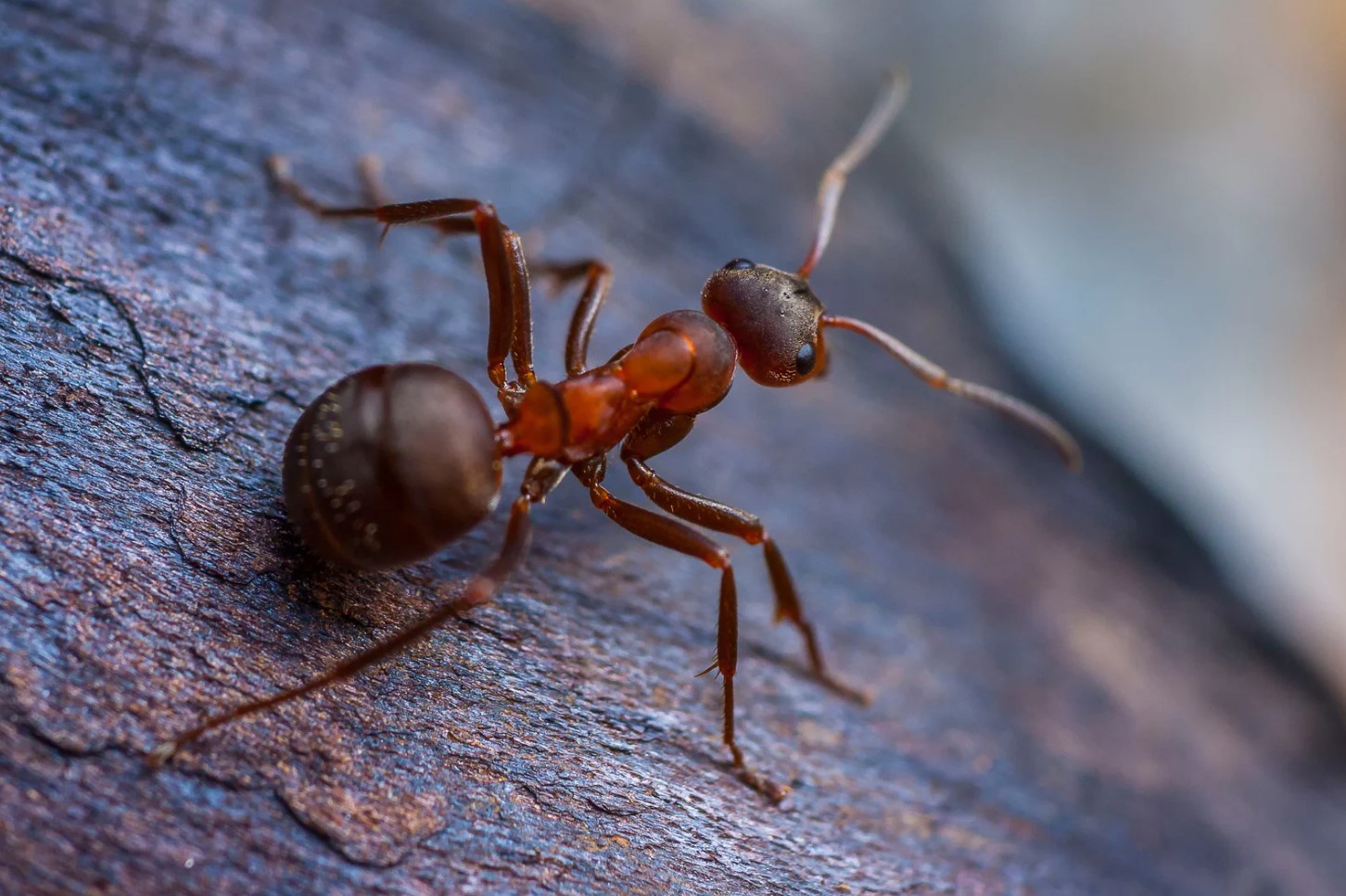
Ant Communication And Chemical Signaling
Ants are known for their strong social structures and organization, and their method of communication plays a vital role in it. Ants use a complex system of chemical signaling to communicate with each other. This communication system involves the use of pheromones, which are chemical signals produced by the ants’ glands. These pheromones are then detected by other ants using their antennae.
Ants use a variety of different pheromones for different purposes. For example, trail pheromones are used to mark the way to a food source, while alarm pheromones are released when there is a threat to the nest. Pheromones are also used in mating, with female ants releasing sex pheromones to attract males.
- Ant Communication:
- Chemical signaling
- Use of pheromones
- Trail pheromones
- Alarm pheromones
- Sex pheromones
| Ants | Chemical signaling |
|---|---|
| Trail pheromones | For marking the way to a food source |
| Alarm pheromones | Released when there is a threat to the nest |
| Sex pheromones | Released by female ants to attract males |
Ants have highly specialized receptors on their antennae that enable them to detect and interpret these pheromone signals. This allows them to communicate effectively with each other, establish territories, and coordinate their activities.
The study of ant communication and chemical signaling has important implications in fields such as agriculture and pest control. By understanding the way that ants communicate, scientists may be able to develop new methods for controlling ant populations and minimizing the damage that they cause.
It is clear that communication is a crucial part of the intricate social structure of ants. Their ability to use chemical signaling to communicate with each other enables them to work together and thrive as a community.
Feeding And Diet Of Ants
Ants are fascinating creatures that can be found all over the world. They belong to the family Formicidae, which is made up of more than 12,000 different species. These tiny insects play a vital role in their ecosystems, and understanding their feeding and diet habits is an essential part of studying their behavior and social structure.
Ants are primarily classified into two groups based on their diet – herbivorous and carnivorous. Herbivorous ants feed mostly on plant material such as nectar, sap, and honeydew. They also eat fruits, seeds, and fungi. On the other hand, carnivorous ants feed mainly on other insects and small arthropods, although some species may also take small vertebrates like lizards and frogs.
- Herbivorous ant species:
- Leafcutter ants
- Harvester ants
- Seed-harvester ants
The most well-known herbivorous ants are leafcutter ants, which are found in the New World tropics. These ants cut leaves and carry them back to their nests, where they use them to cultivate a specific type of fungus. This fungus serves as the ants’ primary food source, providing them with essential nutrients.
Carnivorous ants, on the other hand, have a wide variety of hunting strategies. Some ants are solitary hunters and prey on individual insects, while others work together in groups to capture larger prey. Certain species of ants are even known to enslave other ant colonies and make them work for their food.
| Carnivorous ant species: | Prey items: |
|---|---|
| Bullet ants | Spiders, insects, centipedes |
| Driver ants | Insects, small vertebrates |
| Army ants | Other insects |
The diet of ants is not only important for their survival but also for the environment around them. Herbivorous ants play a crucial role in pollinating plants and spreading seeds, while carnivorous ants help control populations of pest insects. Ants may often be seen as pests themselves, but they are essential ecologically important species that have a significant impact on their ecosystems.
In conclusion, ants have a diverse and unique feeding and diet habits that are crucial to their survival as well as their environment. Understanding these habits allows us to appreciate these tiny creatures even more and helps us study their behavior and social structures further.
Ant Predators And Natural Enemies
Ants, like all living organisms, have predators and natural enemies. These animals can be a threat to the wealth of ant colonies that we see everyday around us. In this post, we will explore the different predators and natural enemies of ants.
Predators of Ants:
- Anteaters – as the name suggests, these mammals feed almost exclusively on ants and termites
- Other insects – some species of wasps, spiders, and beetles prey on ants
- Birds – certain bird species have been known to eat ants, including the roadrunner and several species of woodpeckers
- Mammals – some small rodents such as shrews and bats are known to feed on ants as well.
Natural Enemies of Ants:
- Parasitic wasps – these insects lay their eggs inside ants, which eventually hatch and kill the ant host
- Antlions – the larvae of these insects prey on ants by digging pits in the ground which ants fall into and can’t climb out of
- Fungus – there are certain species of fungi that attack and kill ants, using their bodies as a host for growth
- Bacteria and viruses – like all living things, ants can also be attacked by bacteria and viruses. Some of these microbes can cause ant populations to decline or even collapse.
Some of the above-mentioned predators and natural enemies of ants are also a major part of ant colony life, shaping the behavior and evolution of ant populations. It is important to study and understand these interactions and their role in the ecology of ant communities.
Ant Nesting And Habitat Preferences
Ants are fascinating insects that are found in virtually every part of the world. They are known for their hardworking nature, social structures, and unique behaviors. One of the most interesting aspects of ants is their nesting and habitat preferences. What are the different places ants call home, and why do they choose those locations?
Ants can nest in a wide variety of environments, depending on their species and preferences. Some ants prefer to nest in soil, while others prefer to nest in trees, under rocks, or even in human-made structures such as buildings. Species such as leafcutter ants build elaborate subterranean nests in soil, while weaver ants construct nests made from leaves and silk. Carpenter ants are known for nesting in wood, and some species even excavate tunnels in living trees.
- Soil
- Trees
- Rocks
- Human-made structures
Ants choose their nesting locations based on a number of factors, including moisture, temperature, and access to food and resources. Some species prefer moist, dark environments, while others prefer dry, sunlit areas. Leafcutter ants, for example, prefer to nest in areas with high moisture levels, as this helps to keep their fungal gardens healthy. Carpenter ants, on the other hand, prefer dry, well-ventilated areas such as attics and crawl spaces.
| Types of Ants | Nesting Habits |
|---|---|
| Carpenter ants | Nest in wood or hollow plant stems |
| Weaver ants | Build nests from leaves and silk |
| Leafcutter ants | Build elaborate subterranean nests in soil |
Ants also have unique habits when it comes to building and maintaining their nests. Some species use their own bodies to create living rafts or bridges, while others employ purely instinctual behaviors to keep their nests clean and organized. Army ants, for example, create temporary nests each night out of their own bodies, while leafcutter ants have specialized workers that take care of the fungal gardens that sustain their colonies.
In conclusion, ants are truly fascinating creatures that have adapted to thrive in a wide variety of environments. Their nesting and habitat preferences are influenced by a range of factors, and each species has its own unique habits and behaviors when it comes to creating and maintaining their homes. Studying ants and their habitats can provide us with valuable insights into the natural world, and help us to better understand the complex ecosystems that support life on our planet.
Ants As Ecologically İmportant Species
Ants are considered to be one of the most ecologically important species due to their significant roles in various ecosystems. They play a crucial role in soil aeration, seed dispersal, and nutrient cycling, which ultimately affects the growth of plants and helps in maintaining the overall balance of the ecosystem.
Ants are also known for their ability to control the population of other insects and pests, preventing them from destroying crops and plants. In fact, some ant species are used as natural pest control for agricultural purposes, reducing the need for harmful pesticides.
Furthermore, ants are an essential food source for many animals, including birds, reptiles, and other insects. The abundance of ants in an ecosystem can directly affect the population of these animals, making them an integral part of the food chain.
- Another essential function of ants is their ability to act as ecosystem engineers. Ants modify their surroundings by building nests and tunnels, which can have a significant impact on soil structure and water infiltration.
- Ants also have a significant role in the maintenance of the global carbon cycle, as they carry organic matter from the surface to subsurface soil, reducing the amount of carbon released into the atmosphere.
In conclusion, ant species play a vital role in maintaining the balance of ecosystems by serving as ecosystem engineers, natural pest control, and food sources for various animals. It is essential to understand the ecological significance of ants and their contribution to the environment for future conservation and preservation efforts.
Ants As Agricultural Pests And Their Control
Ants are known for their remarkable ability to survive in different environments, but they can also cause major problems as agricultural pests. They feed on plant material and can cause damage to crops, which can lead to significant economic losses. Ants are particularly problematic in tropical regions, where agriculture is a major industry. In this blog post, we will discuss the different types of ants that are agricultural pests and the methods used to control them.
One of the most common types of ant that are agricultural pests are the leaf-cutting ants. These ants are found in South and Central America and are particularly destructive to crops such as coffee, citrus, and sugarcane. Leaf-cutting ants use their strong jaws to cut pieces of leaves and bring them back to their nest. This can cause significant damage to crops and can lead to decreased yields.
- Another type of ant that is an agricultural pest is the fire ant.
- Fire ants are found in many parts of the world and are known for their painful sting.
- They can also cause damage to crops by feeding on plant material and by disturbing soil structure.
There are several methods used to control ants as agricultural pests. One method is to apply insecticides to the crops. This can be effective in killing the ants, but it can also harm beneficial insects and wildlife. Another method is to use natural predators such as ants-eating birds or ants-killing fungi. This method is more environmentally friendly but may not be as effective in controlling ant populations.
| Method of control | Advantages | Disadvantages |
|---|---|---|
| Insecticides | Effective in killing ants | Harmful to beneficial insects and wildlife |
| Natural predators | Environmentally friendly | May not be as effective |
In conclusion, ants can cause significant damage to crops and are a major problem as agricultural pests. Leaf-cutting ants and fire ants are just two examples of ants that can cause damage. There are different methods used to control ants, but each method has its advantages and disadvantages. It is important to find a balance between controlling ant populations and protecting the environment.
Medical Significance Of Ants And Their Venom
Ants are tiny creatures that play a significant role in our ecosystem. They are known for their hardworking nature and their ability to form complex societies. However, there is more to these little creatures than meets the eye. One of the aspects of ants that often goes unnoticed is their medical significance. Ants possess venom that can be harmful to humans and animals alike.
There are over 12,000 species of ants, and many of them have venomous stingers. The venom is used to defend their colonies, capture prey, and even in mating rituals. While not all ant species have venom that is harmful to humans, some can cause a painful sting. For some people, a sting from an ant can result in an allergic reaction or even anaphylaxis, which can be life-threatening.
Aside from causing physical harm, ants also have the potential to be beneficial to human health. Ant venom has been found to contain antimicrobial properties, which can be used as an alternative to traditional antibiotics. Researchers have even found that certain species of ants produce compounds that can be used to treat cancer. Ants could be a valuable source of medicinal compounds in the future.
- It is important to note that not all ants are venomous.
- For those who are allergic to ant stings, carrying an epinephrine auto-injector may be necessary.
- In some cultures, ants have been used in traditional medicine for centuries.
Apart from their medical significance, ants also play a vital role in our ecosystem. They help to improve soil health by aerating and mixing soil, which allows for better plant growth. Additionally, ants are known to be excellent bioindicators. Their presence or absence can be used to monitor the health of an ecosystem. This ability makes ants an important species for conservation efforts.
| Beneficial aspects of ants | Harmful aspects of ants |
|---|---|
| Ants can be a source of antimicrobial compounds that can be used as an alternative to traditional antibiotics. | Ants can sting humans, causing pain and potential allergic reactions. |
| Ants can improve soil health by aerating and mixing soil, which allows for better plant growth. | Ants can be agricultural pests, causing damage to crops. |
| Ants are excellent bioindicators, allowing for the monitoring of the health of an ecosystem. | Ants can invade homes and buildings, causing damage to structures. |
In conclusion, ants may be small in size, but they have a significant impact on our lives. Understanding their medical significance and the benefits they provide to our ecosystem is crucial. Further research is needed to explore the potential of ant venom as a source of new medicines. By appreciating and protecting these tiny creatures, we can ensure their continued contribution to our world.
Ants İn Literature And Culture
Ants are small creatures that occupy our planet in large numbers. They can be found almost anywhere and have played a significant role in human culture throughout history. Interestingly, ants have made appearances in literature and culture, ranging from ancient Greek mythology to modern-day children’s books. Ants have also been used as symbols in different cultures for various meanings.
In Greek mythology, ants were believed to be reborn humans who were punished for their laziness. Similarly, in the Quran, ants are mentioned for their hard work and discipline, which is praised by Allah. Ants are also recognized in Chinese culture as symbols of hard work and perseverance, which are essential traits for success.
Ants have made appearances in multiple children’s books, including the popular “Ant Bully” and “The Very Greedy Bee”. In these stories, ants are portrayed as hardworking creatures that work together to achieve a common goal. They are also portrayed as intelligent and resourceful, often finding creative solutions to their problems.
- Ants have a significant place in art and literature
- Ants are often used as symbols of hard work and discipline
- The myth of ancient Greek suggests that ants were once punished humans
- Ants have been featured in various children’s books
Ants are also used as motifs in visual art, particularly in tribal art. In many African cultures, ants are symbolic togetherness and close-knit communities. In contrast, in some western cultures, ants are used in a humorous way, with anthropomorphic characteristics, showcasing their hard-working nature with a humorous twist.
In conclusion, it is evident that ants have played an essential role in various forms of art and culture around the world. While they may seem like small creatures, they have consistently captured human imagination for centuries, often being utilized as symbols of various meanings. Ants have a unique place in our world, and their diversity has been a source of inspiration for many artists and writers throughout history.
Future Research And Conservation Of Ants
Ants are a crucial part of our ecosystem, with over 12,000 known species and a wide variety of unique behaviors and characteristics. As we continue to learn more about these remarkable insects, it’s becoming increasingly important to focus on future research and conservation efforts.
One area of research that holds particular promise is the study of ant communication and chemical signaling. By understanding how ants communicate with each other, we can gain valuable insights into the functioning of complex social systems, as well as uncover potential ways to control ant populations without resorting to harmful chemicals.
Another important area of study is the impact of climate change on ant populations. As temperatures continue to rise and rainfall patterns shift, it’s crucial to understand how these changes will affect ant behavior, nesting habits, and overall populations. By monitoring ant populations in different regions and studying their responses to changing conditions, we can gain valuable information about the effects of climate change on our environment as a whole.
- Conservation efforts for ants can take many forms, from protecting natural habitats to developing sustainable farming practices that minimize the need for harmful pesticides.
- Another important strategy for conservation is public education, as many people are still unaware of the vital role that ants play in our ecosystems and the potential dangers posed by pesticides and other harmful chemicals.
Ultimately, the future of ants and their conservation rests on a combination of cutting-edge research and widespread public awareness. By working together to study and protect these remarkable insects, we can ensure a healthy and sustainable future for our planet.